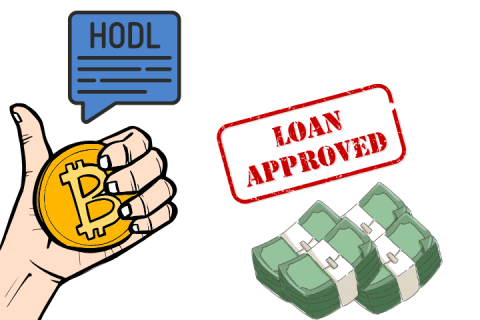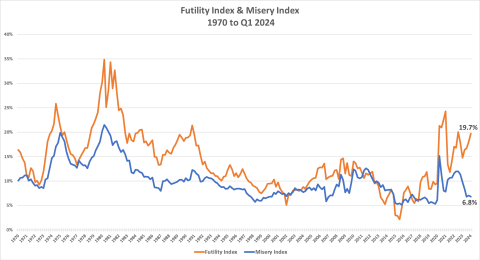A Tale of Two Consumers
The Impact of Two Consumer Classes and the Fed Funds Rate Outlook

During his speech in Jackson Hole in late August, Federal Reserve chairman Jerome Powell signaled that “the time has come for policy to adjust,” implying future interest rate decreases based on data, outlook, and risks. The Fed recently lowered the interest rate target by 50 basis points to a range of 4.75% to 5%. While some people were surprised by the rate's 50 basis point decrease, many others saw it as good news, and some people believed the Fed had delayed for too long. Following the meeting, Chairman Powell stated in a press conference that he did not believe the Fed had overly delayed and that the central bank's projected path of interest rate decreases was reasonable.
The Federal Reserve is indicating that interest rates will drop by an additional 50 basis points this year. The Fed confronts a difficult task in balancing its pursuit of the two main objectives of encouraging maximum employment and stable prices in light of the continued prospect for interest rate reductions, especially given that inflation is dropping but is still above target. Changes in the characteristics of consumer spending, which makes up between 68 and 70 percent of the US economy, make the difficulties the Fed faces in achieving these goals worse. Consumers are happy with a rate reduction even if the demand for work seems to be slowing down as jobless rates have slightly increased to 4.2%. Reduced interest rates can support our consumer-driven economy by giving much-needed relief to those who are having difficulty making their regular payments on credit cards and other obligations. Lower interest rates may run the risk of rekindling the inflation fires and raising housing costs, which disproportionately affect the economically insecure, setting the economy back on a path where higher interest rates are needed to control inflation.
Two Consumer Classes
The Federal Reserve's historic monetary policy reaction to the Great Recession and the long-term impact of keeping the Federal Funds Rate around zero helped to stabilize financial markets and stimulate economic recovery by decreasing the cost of lending. However, the unforeseen consequences of the monetary strategy caused asset prices to soar, particularly in the stock and real estate markets. Richer persons, who were more likely to hold real estate and investments, observed a gain in wealth as the value of their assets climbed. Families in the middle and lower classes, on the other hand, grew far more slowly, got fewer returns from the financial markets, and were more susceptible to the effects of growing living expenses because they were less wealthy and more reliant on salaries. The American economy had become divided throughout time into two main consumer classes, each with unique characteristics and spending patterns. Due to their greater affluence and disposable income, the affluent consumer class, albeit being smaller in number, accounts for a larger share of this spending. Because of their limited financial resources, the class of consumers who are economically insecure, albeit making up a bigger portion of the entire consumer base, contributes less overall.
Affluent Class
The top 20% of earners make up the affluent consumer class, which is made up of high-net-worth individuals and families who have accumulated substantial wealth through real estate, financial markets, and business ownership. The typical wealthy consumer has a high level of education, works at a job that pays well, or receives a sizable income from dividends and capital gains. The wealthy consumer class has a voracious desire for vacations, luxury automobiles, high-end real estate, and luxury products. Their spending habits, which typically account for between 40 and 45 percent of all consumer expenditure, frequently fuel the demand for premium brands and services, fostering the expansion of businesses that offer luxury and bespoke goods.
Economically Insecure Class
The economically insecure consumer class, which comprises the lowest 80% of earners includes individuals and families who have either fallen out of the middle class or never belonged to it. Consumers who are experiencing economic insecurity account for about 55–60% of all consumer spending and frequently hold lower-paying jobs, are on tighter budgets, have lower levels of savings, heavily rely on credit, and are more insecure overall. As a result, they are driven to look for sales, discounts, and values that prioritize spending on housing, food, and healthcare. According to a recent MarketWatch survey, about two-thirds of American consumers say they feel like they are living paycheck to paycheck, and nearly half of them think they are "broke." These factors will further affect the U.S. economy by having a growing effect on the spending levels of consumers who are not as comfortable in their finances.
Outlook
The Fed is shifting its focus to maximum employment as the demand for jobs appears to be weakening and inflation has decreased. Unemployment rates have increased to 4.2%, and this trend is likely to continue as the weakening of the economically insecure class further affects consumer spending. Lower interest rates can help consumers who are already struggling to make their monthly credit card or other bill payments, as well as the job market and our consumer-driven economy. However, lower interest rates run the risk of stoking the already raging stock market, raising housing costs, and reigniting inflation, particularly in light of the 2.5% core inflation reported in the September CPI report. This might force the US economy to go back on a path where raising interest rates is necessary to control inflation, as we saw in the early 1980s further polarizing the two consumer classes and disproportionately affecting the economically insecure consumer. The recent and anticipated Fed actions to further lower the interest rate may not be able to stave off the financial weariness of the economically insecure class brought on by wages not keeping up with inflation, housing costs, and record household debt as the Fed mulls over its next steps in the pursuit of the elusive neutral real rate of interest.



